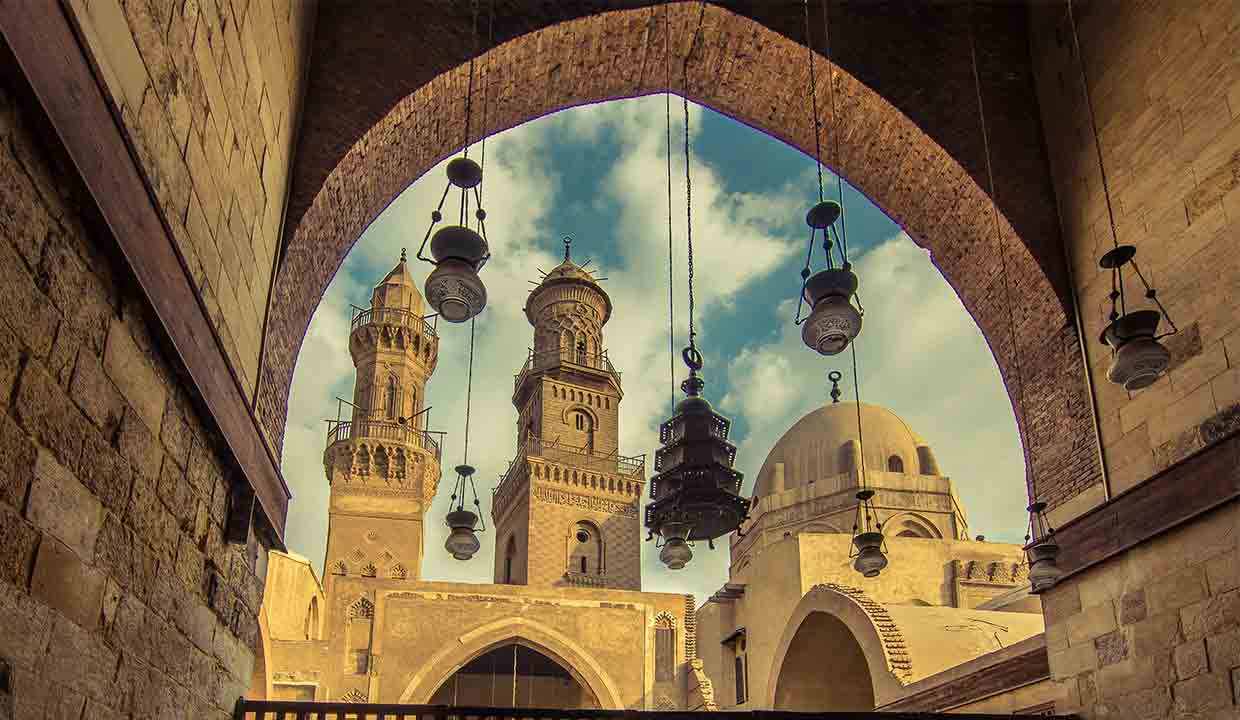Step into Qalawun Complex: Witness Sultan Qalawun’s vision—majestic mausoleums, healing hubs, and centers of enlightenment.
Cairo, with its rich tapestry of history and cultural amalgamation, has been a beacon for explorers, historians, and art enthusiasts. Amidst this intricate web of historical marvels, the Qalawun Complex stands out as a beacon of Mamluk architecture and design, representing an era where piety, charity, and architectural innovation intertwined.
Historical Backdrop
The Qalawun Complex was built by Sultan al-Mansur Qalawun, a formidable figure in Mamluk Egypt, between 1284 and 1285. The swiftness with which this magnificent complex was erected, in a mere 13 months, is testament to the Sultan’s power, influence, and the architectural prowess of the era.
Architectural Grandeur
The Qalawun Complex is a reflection of the medieval Islamic architectural philosophy where structures were not just about aesthetics, but also about serving the community.
- Hospital (Bimaristan): This was not just a place of healing but an institution that represented the Islamic world’s advancements in medicine. The Bimaristan at Qalawun offered services to all, irrespective of their socio-economic status, emphasizing the importance of charity in Islamic traditions.
- Madrasa: A center for religious learning, the madrasa in the Qalawun Complex was a nod to the Sultan’s commitment to Islamic education. With its expansive courtyard and intricate calligraphy, it was an environment conducive to contemplation and learning.
- Mausoleum: The mausoleum, intended as a resting place for the Sultan, is perhaps the most artistically notable part of the complex. Adorned with marble, stained glass, and a myriad of geometric and floral patterns, it stands as a testament to the artistry of the Mamluk era.
Location and Cultural Significance
Strategically located at Bayn al-Qasrayn on al-Mu’izz street, the Qalawun Complex is part of Cairo’s historic core. The area, known for its architectural gems from various Islamic periods, showcases Cairo’s evolution over the centuries.
The complex, given its multi-functional design, was not just an architectural statement but a socio-cultural one. By combining spaces of worship, learning, healing, and memorial within one compound, it exemplified the holistic approach of Islamic institutions.
Conclusion
Today, the Qalawun Complex is more than just a monument; it’s a narrative. A narrative of a bygone era, of Sultan Qalawun’s vision, of Islamic Cairo’s zenith, and of the interplay between power, piety, and artistry. For anyone venturing into Cairo’s historic heart, the complex is a must-visit, offering insights into an age where every brick and tile had a story to tell.
